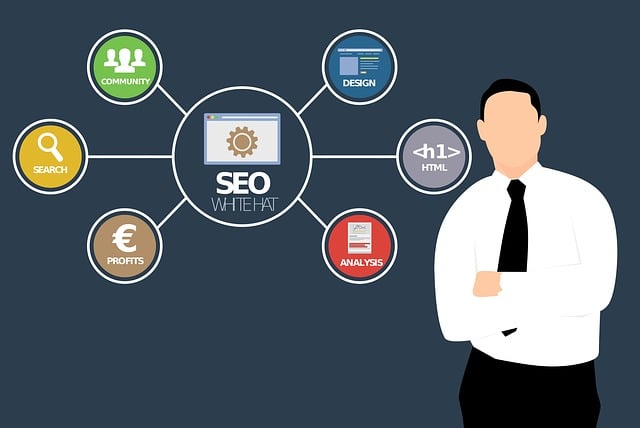Artificial Intelligence (AI) is transforming landscape design by offering personalized, efficient, and sustainable solutions through advanced algorithms and data analysis. AI-powered digital invoicing systems automate traditional billing in landscaping businesses, leading to faster, more accurate transactions, improved financial tracking, and higher client satisfaction. To integrate AI effectively, businesses should assess current workflows, choose suitable AI tools, prepare and organize datasets, train models, implement into operations, and continuously optimize performance, revolutionizing their core operations and enhancing client interactions.
“Explore the future of landscaping with AI design personalization, revolutionizing the industry. This article delves into the transformative power of Artificial Intelligence in shaping outdoor spaces. We examine how AI enhances user experiences through tailored designs and offers efficient solutions for landscaping businesses with advanced digital invoicing systems.
Learn about the step-by-step integration process, unlocking benefits like cost savings, improved client satisfaction, and streamlined operations. Discover how AI is navigating the landscape design world, making it a game-changer for professionals and property owners alike.”
- Understanding AI's Role in Landscape Design Personalization
- The Benefits of AI-Powered Digital Invoicing Systems for Landscaping Businesses
- Implementing AI: A Step-by-Step Guide for Seamless Integration
Understanding AI's Role in Landscape Design Personalization

In the realm of landscape design, Artificial Intelligence (AI) is revolutionizing the way personalization is achieved, marking a significant departure from traditional methods. AI’s role goes beyond simple automation; it enables designers to create tailored outdoor spaces that cater to individual preferences and functional needs. By leveraging machine learning algorithms, these systems can analyze vast datasets about client preferences, site-specific details, and weather patterns to offer innovative design solutions.
The integration of AI into landscape design offers numerous benefits, including increased efficiency and accuracy in estimating costs using digital invoicing systems for landscape jobs. This technology allows designers to quickly adapt to unique client requirements, ensuring that every project is bespoke. Moreover, AI-driven personalization enhances the overall user experience by creating outdoor environments that are not just aesthetically pleasing but also functional, comfortable, and sustainable.
The Benefits of AI-Powered Digital Invoicing Systems for Landscaping Businesses

AI-powered digital invoicing systems are transforming the way landscaping businesses operate, offering numerous benefits that streamline processes and boost efficiency. By automating traditional billing methods, these innovative tools provide a faster, more accurate alternative for both businesses and clients. With AI, landscaping professionals can quickly generate customized invoices tailored to specific job details, ensuring every expense is accounted for. This level of personalization improves client satisfaction by demonstrating a commitment to detail and transparency.
Furthermore, digital invoicing systems powered by AI enhance data management and financial tracking. Landscaping companies can easily access historical invoice data, track payment statuses, and manage cash flow more effectively. These systems also reduce administrative burdens, allowing business owners to focus on core operations and client relationships rather than tedious billing tasks.
Implementing AI: A Step-by-Step Guide for Seamless Integration

Implementing Artificial Intelligence (AI) in landscaping design and operations can revolutionize how businesses manage their projects and client interactions, but it requires a well-planned strategy for seamless integration. Here’s a step-by-step guide to help you navigate this process effectively:
1. Assess Your Needs: Begin by evaluating your current workflows and pain points. Identify areas where AI could streamline processes, enhance design accuracy, or improve client communication, such as in digital invoicing systems for landscape jobs. Understand the specific tasks that could benefit from automation or intelligent decision-making.
2. Choose the Right AI Tools: Select AI solutions tailored to your landscaping business’s unique requirements. This might include design software with AI capabilities for generating personalized layouts, predictive analytics tools to forecast material needs, or automated systems for simplifying and speeding up invoicing processes. Ensure these tools integrate smoothly with your existing software infrastructure.
3. Data Preparation: AI relies on quality data for training and accurate results. Prepare and organize relevant datasets, including past project details, design plans, client preferences, and billing information. Clean and format the data to ensure consistency, as this step is crucial for effective machine learning algorithms.
4. Training and Testing: Train your AI models using the prepared data, allowing them to learn patterns and make predictions or decisions based on new inputs. Test these models thoroughly with diverse scenarios to validate their performance and accuracy. Iterate the training process if adjustments are needed.
5. Integration and Implementation: Once your AI systems are trained and ready, integrate them into your existing workflows. This might involve setting up automated processes for invoicing, integrating design tools with client-facing platforms, or feeding real-time data into predictive analytics dashboards. Ensure all team members understand their roles in the new system.
6. Monitor and Optimize: After implementation, closely monitor the performance of your AI systems. Collect feedback from users, analyze outcomes, and make adjustments as necessary to enhance efficiency and effectiveness. Regularly update models with fresh data to keep them adaptable and precise.
AI is transforming landscape design, offering personalized experiences that enhance outdoor spaces. By leveraging AI technologies, especially in digital invoicing systems for landscape jobs, businesses can streamline operations and deliver exceptional service. The implementation process, as outlined in this guide, ensures a smooth transition to an AI-driven workflow, allowing professionals to focus on creative aspects while reaping the benefits of efficient data management. Embrace AI landscaping for a future where design personalization meets seamless business operations.
